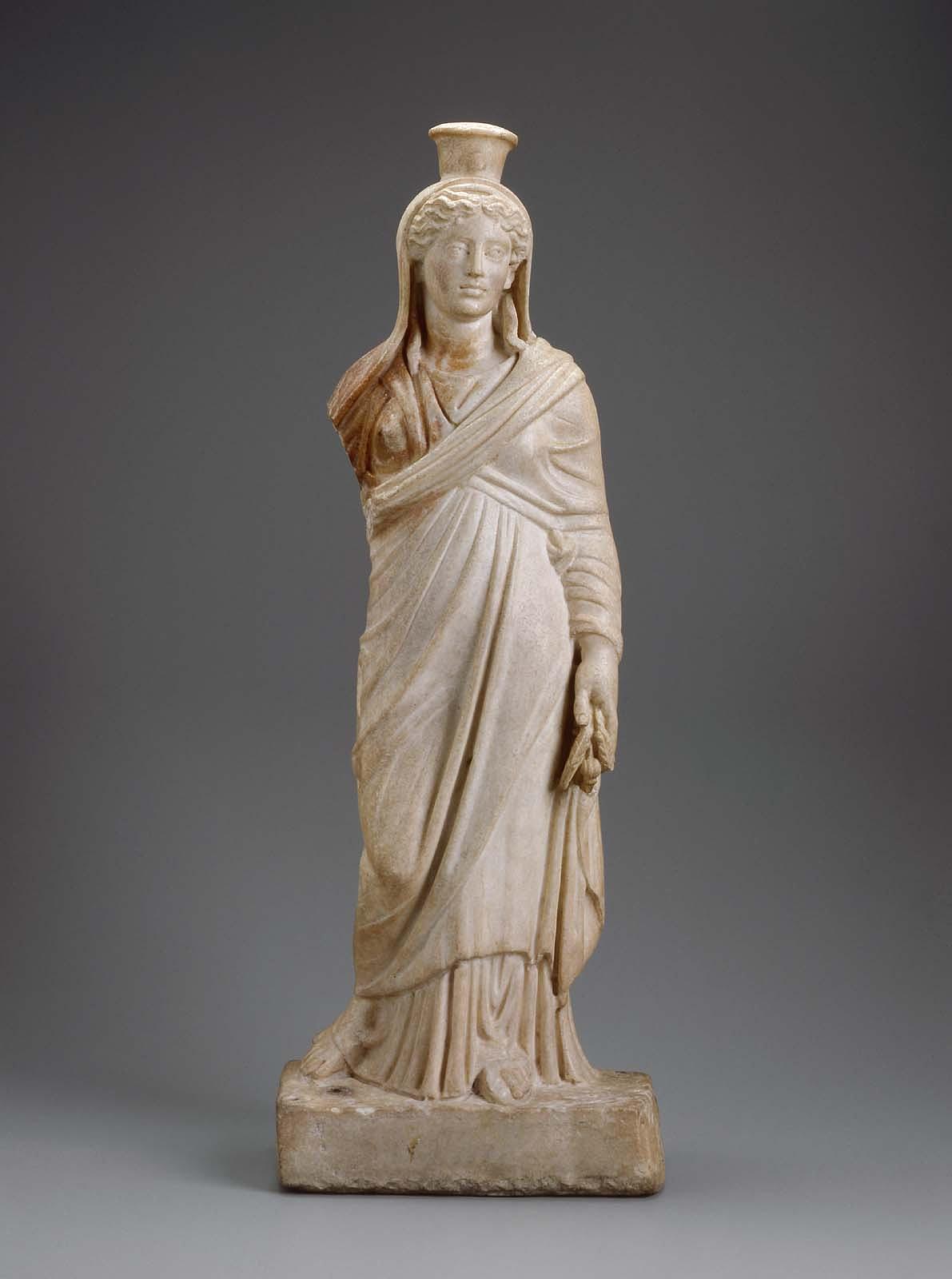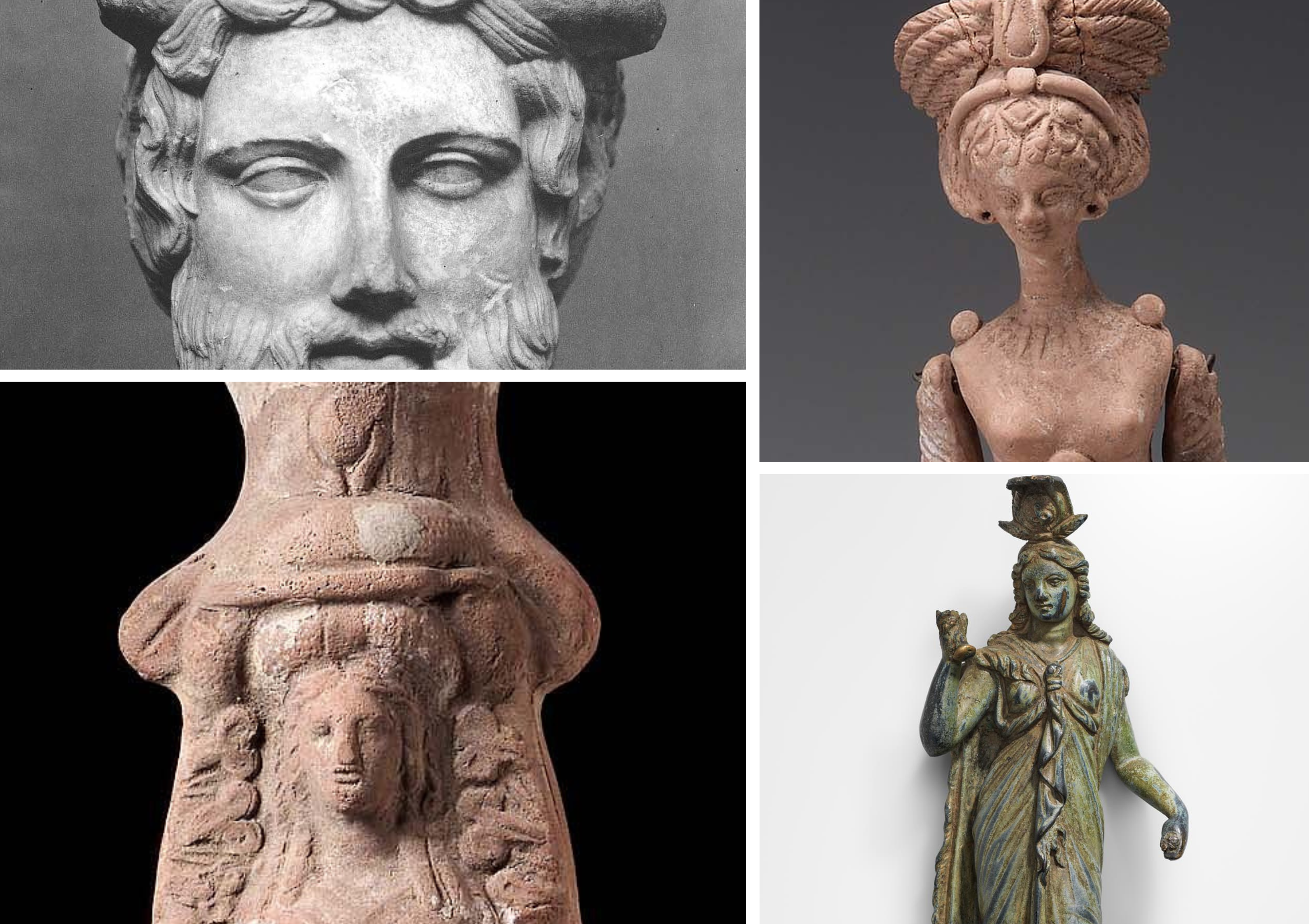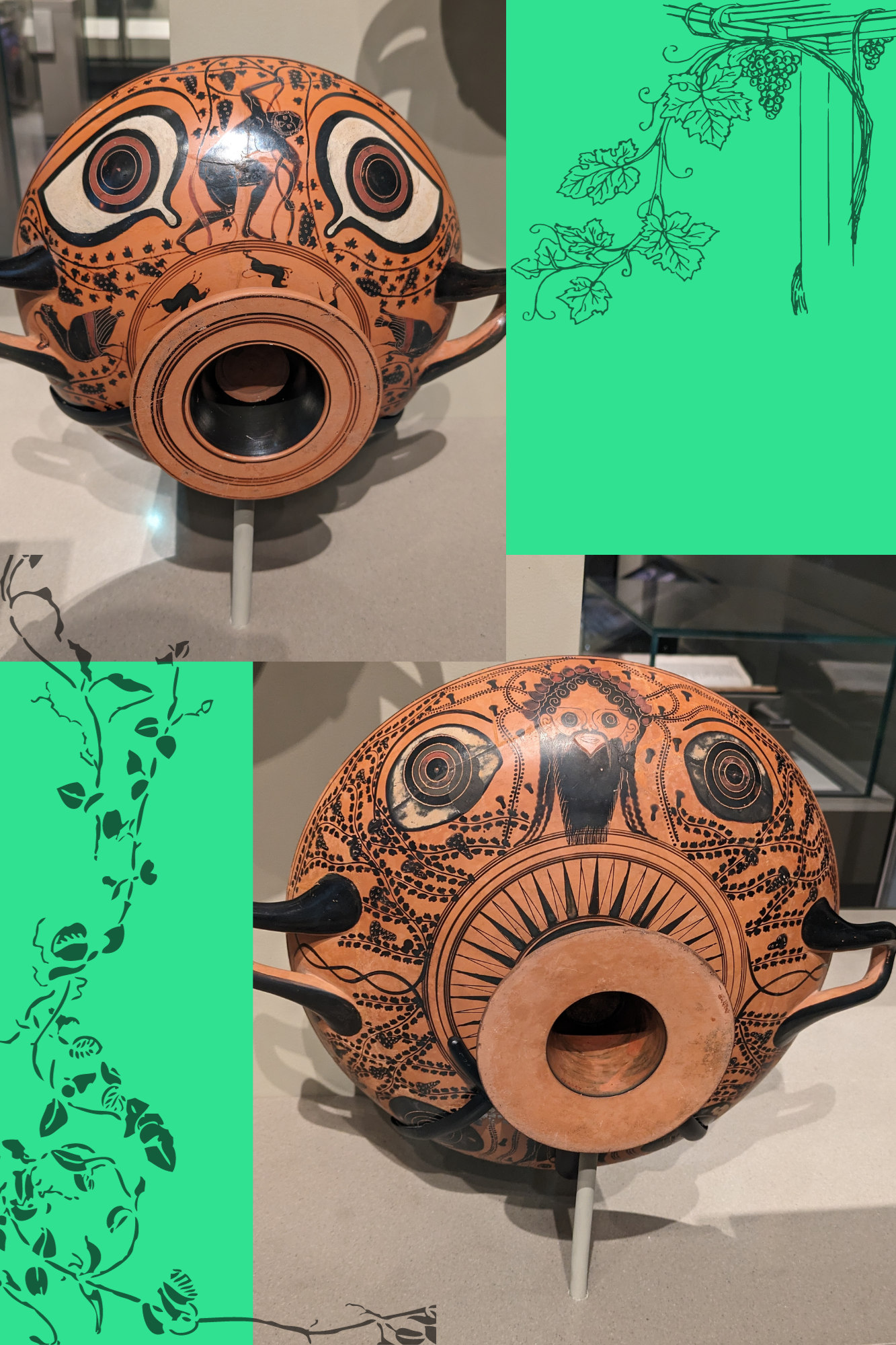Blogging? in 2023? On the small-web?! Truly times have changed. Unlike previous blogs I've run, I make no promises to how regular this one will be.
Today I went to the Boston Museum of Fine Arts with the Temple of Dionysus. It was nice to visit a wing of the museum I haven't seen in a few years. I spotted a few Hellenistic era Kemetic gods that I wanted to share with you all!
Demeter-Io-Isis

This statue of Demeter-Io-Isis called to me from across the room. As soon as I saw that headdress, I knew this had to be an Isis statue! Closer examination revealed a sun disc on the headress. Barely visible at Her hairline are two small horns! This Roman statue dates back to the 2nd century. While I was familiar with the relationship between Isis and Demeter as mourning harvest goddesses, Io was a new figure to me. I'm glad I took a second to learn about her, as I discovered this fascinating story!
Io was a mythological woman who, unfortunately for her, became a lover of Zeus. Depending on how the story goes, she is transformed into a cow to either hide her from Hera or as punishment by Hera. She either flees Greece after being saved, or is forced into exile because she is under attack from a gadfly swarm Hera sent to attack her. She escapes to Egypt, and Zeus helps her to regain her human form. She then marries Telegonus, an Egyptian king. She eventually becomes a form of Isis: presumably because of being connected to cows, queenship, and the wandering goddess?
This is where it gets interesting. Io-Isis appears in Ovid's Metamophoses, where this story is shared:
Iphis and Iante
This story contains references to femicide, infanticide, and internalized homophobia.
A poor Cretian couple, Lygdus and Telethusa are expecting a child. Lygdus tells his wife that if their child is a girl, they will have to kill her, as they cannot afford to raise a girl. Toward the end of her pregnancy, Telethusa has a dream. Io-Isis appears to tell Telethusa that the child will be female, but that she would help to protect them. In order to do so, Io-Isis told Telethusa that she must decieve her husband and raise the baby as a boy named Iphis. Somehow, she got away with this!
Iphis grew into their teens, and Lygdus arranges a marriage for them to a beautiful young woman named Ianthe. The two were deeply in love, but while Ianthe could scarcely await their wedding day, Iphis lived in fear, because they knew the truth about their sex would be found out. They lament about this, saying: "in all the animal world no female ever feels love passion for another female—why is it in me?" Telethusa tries to delay the wedding, but to no avail.
In an act of desparation on the eve of the wedding, mother and child take to the temple of Isis, to pray for Her aid. The doors of the temple shake, the altar trembles, and when the pair turn to leave the temple, Iphis is revealed to appear in every was as cisgender man! The couple are then happily married.
Obviously, gender and sexuality in the ancient Mediteranean are very different than they are today. But it is a wonderful story to view from a queer and trans lens! I wonder how Iphis would feel to know their lamentation that all animals are heterosexual was wrong? Seeing Io-Isis as a goddess who aided in a transition is beautiful to me.
There were several other hellenized Netjeru finds nearby, namely:
- This articulated figurine identified as Aphrodite was interesting. Her crown is in the style of an Egyptian solar goddess, as is Her broadcollar. Perhaps an Aphrodite-Isis or Aphrodite-Hathor? She appears to have once had separate earrings!
- A bust of Zeus-Ammon which I found quite striking. It's a shame the bulk of His horns are lost to time!
- This tiny Isis statuette was absolutely charming, and I found myself holding back the urge to giggle at the undignified state Her crown is in.
- An interesting figure of Isis-Aphrodite "Anasyromene": a title meaning "lifting-the-skirt". The currator also suggests this could be Isis-Bubastis, but I wonder if this could just as easily be a Hathor, in reference to Her revealing Herself to Ra?

Dionysus
Within the past year, I've started exploring a relationship with Dionysus as a part of my practice. Given His syncretic relationships to Osiris, Antinous, and the Apis bull, He has nestled well into the realm of the Mysteries for me. He exists somewhere on a continuum between Heru-sa-Aset and Wesir both at once being the one lost to death, yet also the one allowing the dead to rise. More on this part of my practice as it develops.
Dionysus, of course, has a whole room to Himself at the MFA in addition to depictions scattered throughout the Greek and Roman wing and the wing of European art. A few favorites of mine:
- This head of Bacchus was located next to a coffin depicting a fantastic scene of His worshippers. I was quite enchanted by this peace, as my Dionysus leans toward Antinous, a young lover of Emperor Hadrian who was later defied in both Greece and Egpyt.
- This sarcophagus deserves special mention. It depicts the Triumph of Dionysos: a march of bacchantes celebrating the god's journey to India, and His return with both fantastic creatures (elephants! giraffes! lions!) and of course, wine.
- This Nubian Dionysos blew my mind! I knew that His cult traveled far and wide, but all the way to Nubia? This has my mind racing, as someone who is primarily a Kemetic. Part of my personal mysteries has involved connecting Dionysus with Hethert-Amenti. I feel that if He truly made it all the way to Nubia, there is no way They don't have a connection. I just have to keep digging to find out if that connection is historically informed or a mystery just for me. :)
- Worshipping women are depicted at a festival on this jar. What I find particularly interesting is how well the jar sets the scene for a festival in the most practical of senses: an idol in the form of a mask hanging from a tree, the altar decked with offerings. It's a much less fantastical view of ancient ritual than we usually see!
- Again, a jar depicting female worshippers carrying Dionysian regalia.
The coolest of these, though, were a pair of kylix (drinking cups) that appear to double as masks. When raised up to drink, their painted eyes look at the viewer. As someone who grew up looking in awe and fear at the terrifying, transformative masks from Majora's Mask, these struck me deep. I can only imagine being posessed by Dionysus's holy madness and looking at a figure drinking from these!

In all, it was a fantastic trip. It was wonderful to meet with some other devotees and see some cool art. As with any other trip to the MFA, I left with more questions than answers. Isn't it wonderful to always be learning more about the gods?